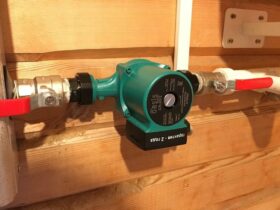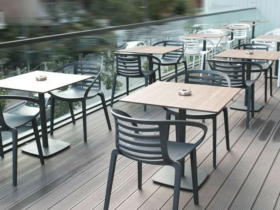One of the most elegant and unpretentious plants of the garden is precisely Petunia. In the garden vasone or container, in the soil on the flowerbed – it is always good and pleases with flowering literally all summer.
There are many varieties of ampelous petunia, which looks especially impressive in balcony garden boxes or wall pots. But there are also varieties that form a compact bush, all covered with flowers with silk petals and similar to a colored cloud.
Terry petunias are most popular recently [1]. This, as a rule, is not a variety, but hybrids. But there is a myth that Petunia is very difficult to grow. This delusion should be immediately refuted!
We grow the seedlings of Petunia.
The inconvenience of growing petunias is that their seeds are extremely small, smaller than poppy grain. Inexpensive varieties are sold in the form of seeds “in kind”, but more refined ones go on sale as granules. Each tiny seed is covered with a water -soluble shell containing nutrients. It is much easier to work with them.
Universal soil purchased in a store for gardeners and gardeners is quite suitable for planting petunias. The land from its own garden will also be made, but it is desirable that it be mixed with sand and humus: 2 parts of the Earth, 1 part of the humus and one part of river sand.
Pour the ground into landing containers, moisturize and slightly stick. Then we have on it right on the surface of the seeds. If these are seeds in granules, then at a distance of about five centimeters from each other, we press the seeds with the hand. In no case do not sprinkle seeds with earth! Now cover the container with glass or tighten with a film and put on the window. Best – to the eastern one, since petunia should germinate in the light, but direct sunlight gets it to the hit. Room temperature 20-25 degrees is quite suitable.
It is impossible to allow the shell of granular seeds to dry, but you can’t fill them either. 7-14 days after sowing there will appear seedlings. As soon as the first real sheet appeared-you can remove glass or film, now the best temperature for seedlings will be 14-16 degrees.
Care for seedlings of Petunia.
At first, the sprouts are very fragile and hold on to the ground with one thin spine. Do not water seedlings from a spray gun-you simply wash it. Newborn petunia is watered with drops under a spine of a pipette or a teaspoon. Keep in mind that petunias do not tolerate waterlogging and high temperatures.
When the fourth real sheet appears on plants, they can be transplanted either into a more spacious container or “to a permanent place of residence”.
If you plant the seeds of petunias in January-February, then in May you can put a flowering plant with flowering plants to the balcony or in the courtyard. But then, during the period of growing seedlings, it will have to be watered, since for normal vegetation a short winter daylight hours is clearly insufficient.
Starting growing seedlings from March, you will completely do without.
Care for adult plants.
Adult petunias are quite photophilous. Many varieties are drought tolerant. The waterlogging cannot be carried out. Gratefully respond to top dressing with complex fertilizers. Petunia growing in flowerpots and containers must be fed regularly, once a week. Plants growing in the ground are less demanding on top dressing, but one or two times a month you need to pamper them and them. And here it is important not to overdo it. “Overfed” by nitrogenous fertilizers of Petunia begin to “fat”. The bushes become so great that they can take 1-1.5 square meters. The stems thicken, extremely plentiful foliage appears, but there are few flowers.
Petunia bloom all summer. As soon as the time for returning frosts has passed, they can be planted in a permanent place. In May Petunia, in vazons in the morning you can take it into the garden, and clean up the veranda at night.
However, frost up to five degrees of the plant will not kill. Sometimes these amazing flowers decorate the garden until the snow.
If you are not lazy and periodically remove the wilted flowers from the bushes of Petunia, then the plants will bloom even more actively and look more elegant.
Another big plus of petunias – they are not prone to pests.
The variety of Petunia you like can be grown as a perennial plant. In mid -September, transplant the plant into a flowerpot by cutting. Water moderately. The most suitable temperature for wintering petunia is 12-14 degrees. Perhaps in March -April, when the color day will increase, a grateful plant will give you the first flowers.















Leave a Reply
View Comments